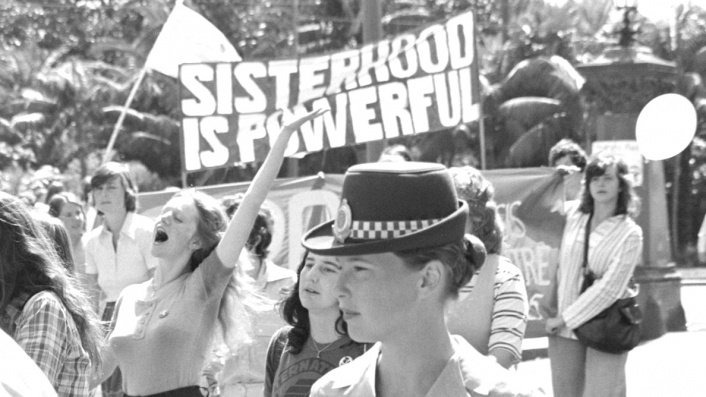Brazen Hussies is a vital account of the rise of second wave feminism in Australia

Brazen Hussies (now playing in cinemas) documents an explosive time of activism in Australia, capturing the struggle of the Australian Women’s Rights Movement in the ‘60s and ‘70s. Here’s critic Travis Johnson’s review.
If we don’t keep stories of struggle alive, they tend to be robbed of their power. We look at the past through the lens of the present and so when we reflect on the (ongoing, let’s be clear) battle for equality across any given demographic strata there’s a broad tendency, especially among straight, white, cis males (among which your author can be numbered) to think, well, how bad could it have been?
See also
* All new movies in cinemas
* All new streaming movies & series
“Very” is the unvarying answer—although it can take a short, sharp shock to knock the blinkers off. Brazen Hussies, a new documentary from Catherine Dwyer, is just the kick needed: an incendiary, exhaustive, emotive and well-researched look at long struggle of the Australian Women’s Rights Movement in the ‘60s and ‘70s.
Clocking in at a tight 90 minutes, the film is incredibly propulsive in its eagerness to try and encompass as many aspects of the wide-ranging, grassroots movement as possible. Dwyer presents us with a decade of struggle, kicking off roughly when feminists Merle Thornton and Rosalie Bogner chained themselves to the to the public bar of Brisbane’s regatta Hotel in 1965 to protest women being banned from such places, and wrapping in 1975 with the dismissal of the progressive Whitlam government.
The spine of the film is the career of single mother Elizabeth Reid, who became the world’s first advisor on women’s issues when she was appointed as such by Whitlam in 1973, and her story beautifully illustrates how the movement did so much to remove the stigma of unwed motherhood (as the child of a single mother, it certainly hit me hard). Elsewhere we see how women activists used art, music, literature and straight up agitprop to fight the good fight, such as in the work of artists Margot Nash and Robin Laurie of the wonderfully-monikered Anarcho-Surrealist Insurrectionary Feminists (ASIF).
It’s a heady rush. Between taking over an empty Anglican Church property to found Sydney’s first women’s shelter, to founding a separatist commune in the Blue Mountains, to the familiar (but still thrilling) sight of street protests and clashes with the cops, Brazen Hussies depicts the period as an explosive time of activism and vibrant creativity. It’s not a one-sided celebratory hagiography though, taking pains to discuss internal divisions and factional clashes within the movement. One interviewee recalls a discussion as to whether male children should be allowed at a rural lesbian refuge, while the erasure of the struggle of women of colour is commented on (for all that the film is laudable, this feels like a very white story).
What really comes across is the plurality of voices, attitudes and ideologies that were grouped under the Women’s Movement banner. This caused no small amount of headaches for the police and ASIO, who were trying to get a handle on the situation—a phenomenon not a million miles away from modern politicians and law enforcement officials trying to frame Antifa as a structured organisation rather than a broad ideological push. We get insight into just how concerned the powers that be were about the cause, with ASIO maintaining surveillance on prominent figures. For their part, feminist activists used the name of Russian revolutionary Vera Figner as a generic nom de guerre to give to the authorities when arrested, leading to ASIO maintaining a file on a feminist leader who didn’t actually exist.
That’s pretty hilarious and, indeed, Brazen Hussies has a ribald and ironic sense of humour almost constantly in play, which prevents the film from descending into po-faced piety. Instead, what we have is a raucous, informative and joyous account of a crucial decade in the struggle for equal rights.

















